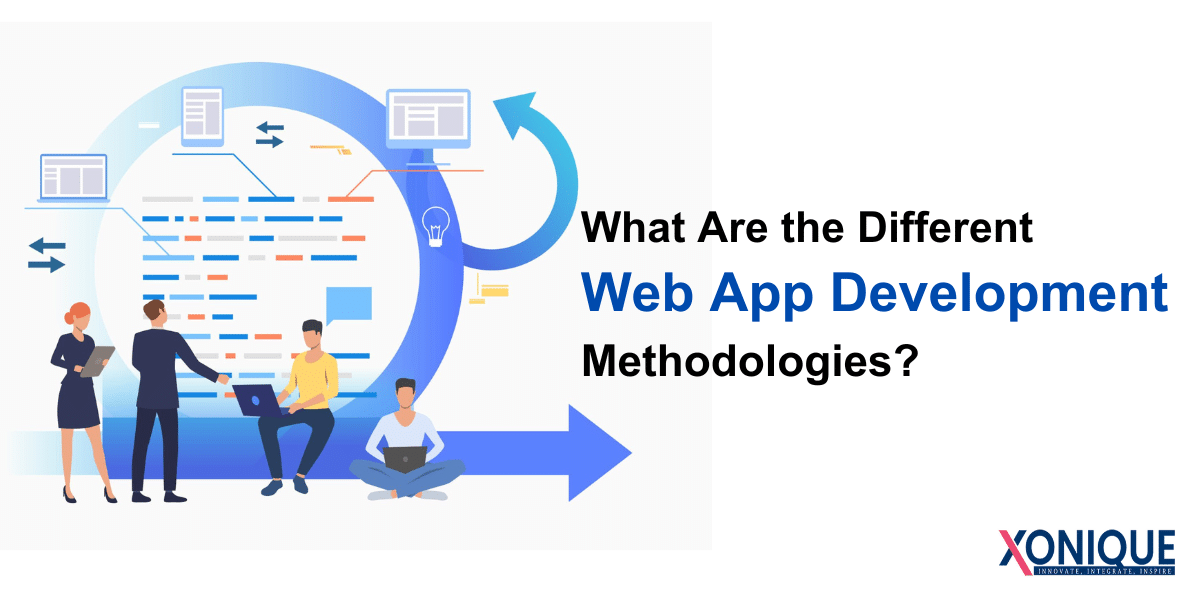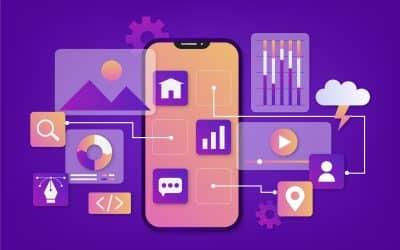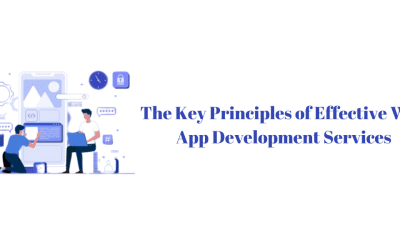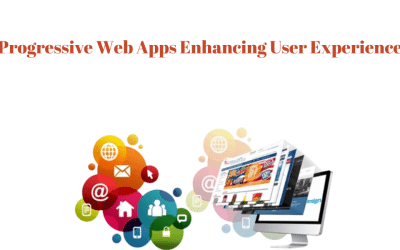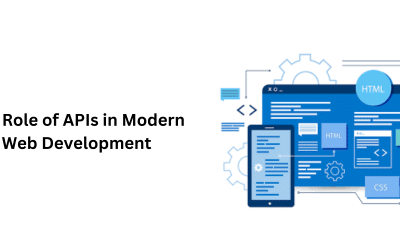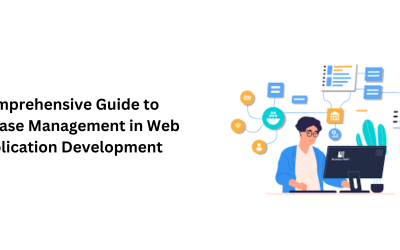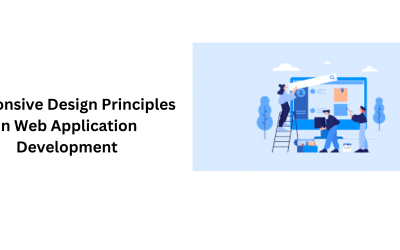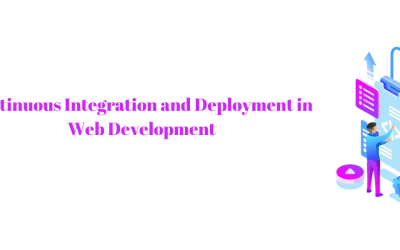Are you planning to develop an app for the web? Congratulations if so! There must be many questions running through your mind at this very moment about web app creation – such as their development or examples thereof. Congratulations! You have found what you seek here, and let’s begin our conversation now!
Web App Development Services has seen tremendous growth within today’s ever-evolving technological environment. People desire customized apps explicitly tailored to suit their needs, feature-packed, and readily accessible via any web browser. Like native mobile applications, it is more easily accessible via any device capable of viewing it. As a result, numerous industries such as finance, e-commerce, and banking utilize popular web apps that meet these criteria. These applications are often considered integral elements in providing superior experiences to end-users.
Before your product can reach customers, it must first go through development. Selecting an IT firm to assist in building web applications or any other software projects requires choosing an approach that best meets their requirements for software development. This blog post will discuss the top web app development methodologies.
So, let’s get started.
What Is Web Application Development?
Web Application Development creates web-based applications that run through the web server, with server-side and client-side programming. But, the process extends over the creation and development of specific software. It also considers business objectives along with legal and regulatory issues and various technologies to ensure that it is both beneficial to end-users and efficient for companies. Web application development is creating and building web-based software using modern technology, including frameworks, languages, and instruments.
Additionally, web app development has various phases, including conceptualization, development (programming), testing, and deployment (publishing), and it should be carried out carefully. Web Application Development Company must look at the ideal web app design to create the web-based application they want to build.
Web application development helps businesses in multiple ways. They can connect information from various departments into a single area to allow employees to access information from one place easily. Additionally, it enables users to get information at any time and from any time without traveling to the place. Thus, businesses that use web applications can use the technology to achieve their business goals, consequently leading to successful outcomes.
Benefits Of Web Application Development
If you are an entrepreneur, you will likely want to dig into the benefits and drawbacks of online applications to decide if it’s the ideal option for your company! Also, it is essential to consider how enterprise software development could assist you in making a difference within your organization. Before that, let’s examine the advantages of developing web-based business applications.
Cross-Platform Compatibility
Cross-platform compatibility is among the main advantages of developing web apps. This allows users to utilize an application with a single page regardless of their devices. This is why many big companies use it, specifically when seeking to appeal to a broad user base.
User Security
Another advantage is that these apps increase users’ security. They are not accessible to malware if users use reliable app store sites (Google Play Store for Android apps and Apple App Store for iOS applications).
Easy Maintenance
Another benefit is that web applications are easily maintained if you’ve enlisted professionals knowledgeable about the ropes.
Highly Deployable
From a business standpoint, web applications that are easily deployable and can make your business more appealing to potential customers.
Business Agility
Web-based apps can help businesses overcome the challenges of ensuring steady products without making them available on different platforms.
Extremely Scalable
Another benefit is that many companies utilize Web App Solutions for marketing and customer service strategy, which makes them adaptable. It can save money by employing fewer employees with many clients using web-based applications rather than having multiple sites for every market category.
Here are some advantages that, as an enterprise, you could enjoy from developing web applications. However, there’s additional, and if you’re in the market for an application that can be customized to fit your specific business needs, enterprise application development fits into the equation! Making applications designed for huge businesses that meet their specific business requirements is called enterprise application development.
The Stages Of The Web App Development Process
Before gaining knowledge of web app development methods, it is crucial to know the phases of development. Think about a typical workflow for an IT firm. Consider a scenario where an interested client calls an online development team.
Making Contact With The Customer
When a company receives a call from a potential customer, the sales manager talks about requirements or Scope of Work documentation if the person in charge already knows the requirements they would like. The sales manager completes an overview of the requirements of what they would like to achieve, the time frame, the budget, the essential requirements, and any potential bottlenecks. In this phase, the sales manager reviews the prospect and determines if the business can deliver what was requested. If, for instance, an applicant requires a site and a PWA and the company creates only mobile applications, it is best to say goodbye to one another.
Project Research And Discovery
Discovery is analyzing the requirements of the lead’s business and determining a possible solution. If the proposed solution and budget are accepted, the sales manager will pass documents and other specifications on to the lead’s designer for further study and estimate. Following several rounds, the sales manager and the lead develop the scope of activities. The sales manager leaves while the project manager or lead developer is brought in. The lead is now a customer.
Prototypes And Wireframes
Wireframes are the draft of a web page that will be created shortly. It contains all the elements to be put on the webpage and offers an overview of a grid layout of the page. Wireframes permit an accurate estimation and a deeper understanding of functionality.
UI Design
After completing the wireframes and wireframes, we move on to designing an interface for users and then apply the brand’s colors and design elements. The site in development has an adaptable layout, making it easy to navigate and enjoyable using a smartphone. The designer is working on the design resources until they are approved. The developer who leads the process controls the design process since the result is expected to be feasible within the constraints of the client’s budget.
Development Of The Back-End
For Drupal development, where we focus, the installation process and setup are first. After that, developers create every necessary module setting. Once the website pages have been constructed and coded, and the front-end developers put in the designs, Drupal back-end developers ensure the user accepts the website’s pages and that the user has seen demos of all features in the website.
Front-End Development
Based on the specific projects, the front-end and back-end development are in sync, and the front-end accompanies the back-end. The front-end developer is responsible for visual elements and ensures that everything is perfectly pixelated and your website cross-browser-friendly. Attention should be paid to the front end of your website’s state. As it affects critical site metrics, such as Core Web Vitals, and at the end of the day, the impact is also on Google’s ranking.
Quality Assurance
If you’re a user, make sure to complete the testing step. There’s nothing minor about your website’s performance. Trust us when we say your website’s users will know every tiny glitch. Following the integration test, we then test the UI and functional tests. We finish by performing manual smoke tests.
Launch
The issues discovered during the QA phase are currently being corrected, and the team can finalize everything and then set the final setting.
Post-Launch Maintenance And QA
In addition to maintenance and support, the development team typically helps the customer maintain the website, update information, etc. Then, you know the communication process between a developer and a client. It’s time to learn about the most well-known workflow methods.
Methodologies For Web App Development
The most commonly employed Web App Development Methodologies that have been developed explicitly for specific types of projects are:
Waterfall Model
The waterfall approach to software development is one of the easiest and simplest to comprehend—an organized and linear approach based on a specific sequence of steps. “Waterfall” is because of its linear and unidirectional flow through the stages of conception, initiation development, construction, test deployment, and maintenance.
When one stage is completed, can the next one begin? Specific deliverable requirements and a review procedure define each phase. The verification process at every phase allows for the early identification of any errors in the particular phase. The process and the results are thoroughly documentable.
This approach is excellent with small, simple tasks. It is very effective if you are clear on what you’re looking for in your website and are working with a minimal budget. Timelines for projects, deliverables, and cost estimates are well established before the development commences. The minimal involvement of customers throughout the development process.
After a phase has been completed, the process can only be modified without impacting the process. Waterfall techniques are tested only at a certain point in the procedure; if errors happen, they’re usually costly to rectify. This is a wrong choice in long-term projects because it can’t adapt to changing needs during development.
Lean IT Methodology
As the name implies, Lean maximizes customer value by reducing waste. It is all things that provide little value for the client. Thus, unnecessary functionality, pauses during development, and slow internal communications are eliminated. Lean methods are classified according to shorter development times, rapid testing, and, of course, regular feedback from customers. Team members are in control, and all team members have a say in any issues that arise during the project. Ensuring the project is completed faster than the customer’s demands is essential.
While Agile is an effective method, it needs to provide the steps to scale the practices throughout a company. Organizations that employ Agile on a team level are looking to Lean as a Lean approach to develop at a higher level – reduce waste, improve the quality of their work, and create new knowledge to speed up delivery. Teams will have to operate independently, without instructions, which may cause problems if the team has no experience. Focusing on results and using lean methodology can be challenging for your team.
Agile Methodology
The agile development approach is a well-defined method that is flexible and adaptable and designed to overcome the limitations of the waterfall approach. Iterative refers to the way that the software development process is divided in the form of breaking large tasks into a smaller number of functions. Each project brings enhancements or new capabilities. The concept behind this method is easy to use.
The customer-focused agile development philosophy values individuals’ relationships and interactions with instruments. Strengths of the team and efficiency, feedback from internal departments and clients, and client satisfaction are advantages of this methodology. The interaction with clients is enhanced by the team being quick to react to any changes in direction or goals and creating the products.
The time here is divided into sprints. A sprint is the period for the completion of a specific job. It typically takes about two weeks and is not in any particular sequence. When a sprint has been completed, the results of that stage are utilized to design the following section.
The agile development method is ideal for projects that need to learn more clearly and may require adjustments or rework during the object. In certain situations, the high level of involvement from the customer could be an issue. This is a wrong choice for customers who don’t possess the patience or desire to engage in this kind of activity. There is also a chance of endless changes to the product.
Scrum Methodology
Scrum can be described as managing a to-do list. Scrum integrates the discipline and structure of traditional software development methods along with the flexibility and adaptability of a contemporary Agile method.
We can have the scrum Team, the scrum master, who oversees and assists the team in completing the product. Then there is the Product Owner. The product owner serves as the customer’s spokesperson and works to meet the client’s goals. The Scrum team meets every day in the sprint to discuss the progress made, listen to comments, and discuss how they will meet deadlines for delivery. This process eliminates the need to deal with paperwork.
The team creates web-based applications by using an iterative method. Goals are broken down into smaller objectives. Initially, the team members work toward the goals by sprints, thereby building the software. This approach is only suitable for some projects. It is a very experienced team. So, anyone new to the project is never given the chance.
Extreme Programming (XP)
Extreme Programming (XP) uses an agile framework to deliver top-quality web applications. The difference is that it’s built upon a set of principles that improve the effectiveness. The framework can adjust at any point when required due to feedback and circumstances in the market.
Extreme Programming’s values are based on simpleness, which is created by creating the requirements. In addition, it provides feedback throughout every stage of the process, and collaboration among the team members makes XP an improved version. The team must be aware of the product as the user or provide customers with technological solutions to a challenge.
You, as the user, explain the functions you want in the app to developers. They plan, schedule, design, and split the projects into iterations. Regular and constant testing ensures fault-free software. Listening to feedback helps developers better comprehend how their applications work.
Extreme Programming might not work for every situation and every team. The participation of the customers is crucial, but the client might want to participate in the manner XP demands. It also involves an investment of time and has a higher cost.
Dynamic Systems Development Method (DSDM)
The DSDM framework is based on the renowned Pareto concept: 80 percent of the system can be implemented within 20% of the time. It’s designed for speedy production. Don’t be shocked that DSDM is about collaboration with teams and clients, frequent delivery, and integrated testing. Another thing that separates DSDM from those on the Lean and Scrum list is that items can be removed from the backlog if they block the release of the most critical capabilities.
Kanban development
Originating from Japanese Kan–visible, ban–board or card. Similar to the Lean approach, the Kanban method was created by Toyota management. The primary idea behind Kanban is a visualization of workflow. The process involves making the physical space (Kanban board) that allows you to track the progress. Groups or even individuals can use Kanban boards.
Conclusion
Each method has advantages and disadvantages. With the variety of approaches used for web-based development that apply to various applications, developers are given multiple choices to create flawless programs. Each approach comes with specificities that are unique to each one. There can be no one-size-fits-all solution, as the development method for a particular program may depend on various aspects.

